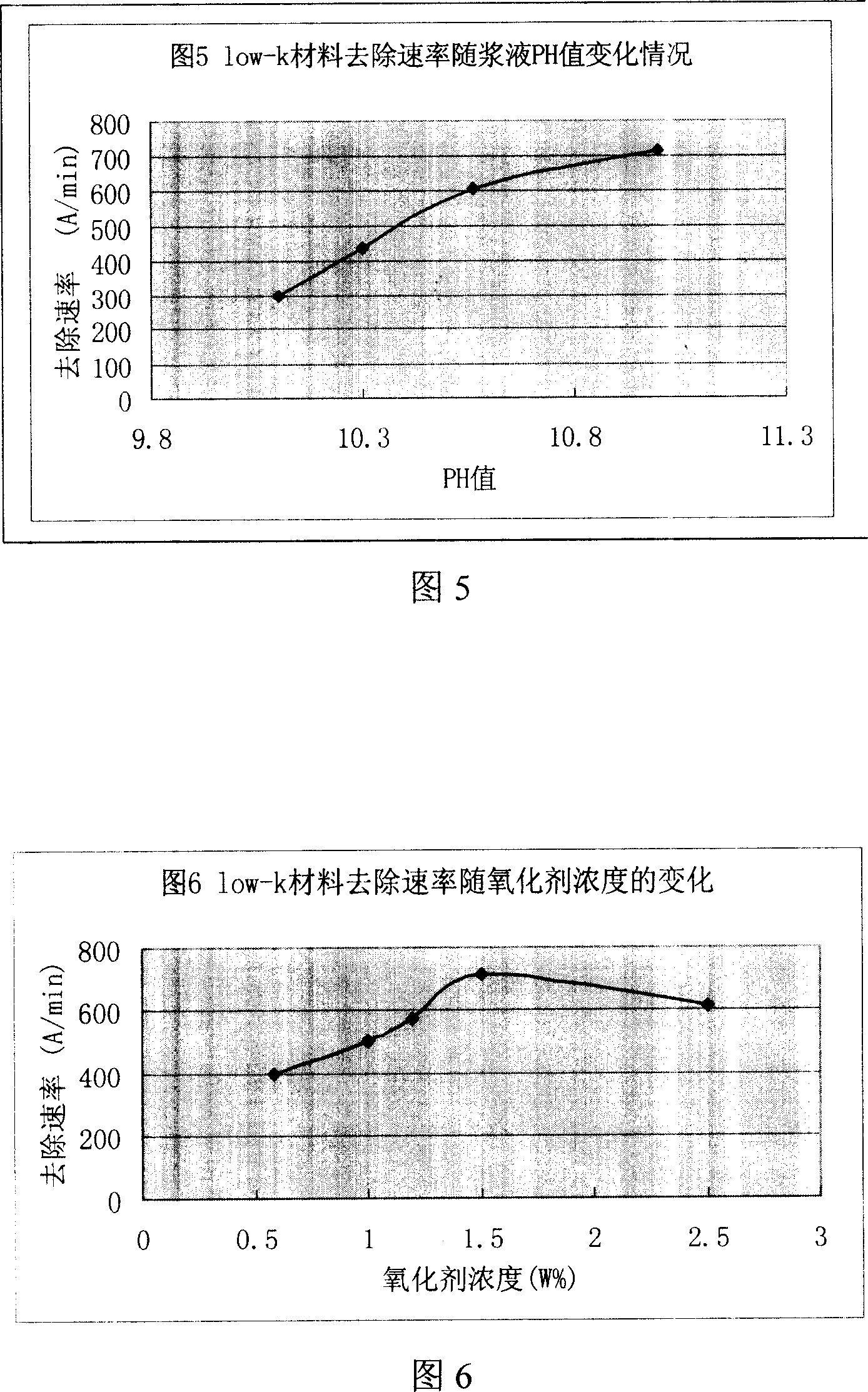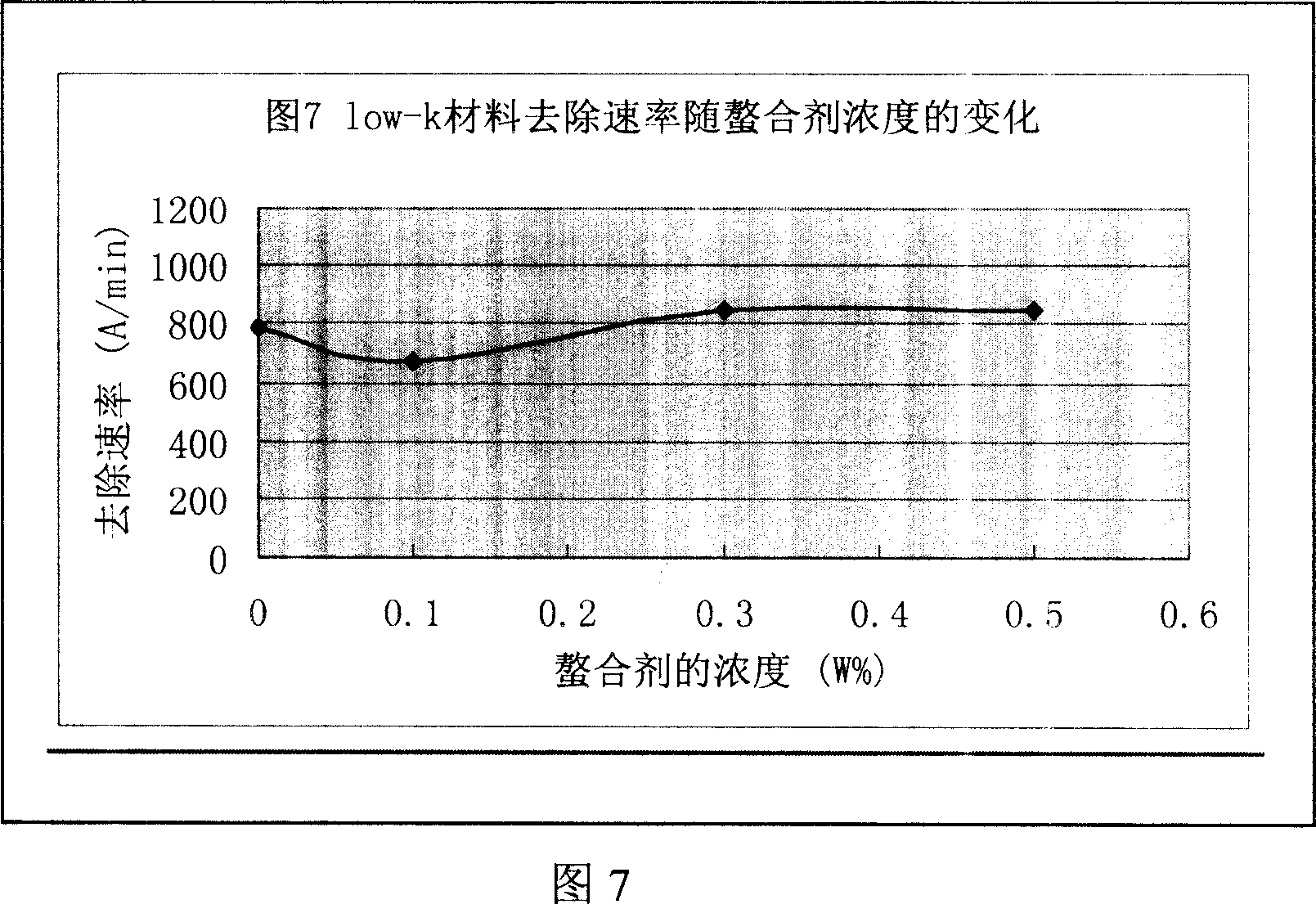Polishing solution used for polishing low-dielectric materials
A low-dielectric material and polishing liquid technology, applied in the field of polishing liquid, can solve the problems of low removal rate of low-dielectric material, difficult to control polishing selection, etc., to reduce surface contamination, no surface scratches, and improve product yield Effect
- Summary
- Abstract
- Description
- Claims
- Application Information
AI Technical Summary
Problems solved by technology
Method used
Image
Examples
Embodiment 1
[0044] 10% of ordinary silica sol particles (70nm) and water balance compared with polishing solution 1, pH=11;
[0045] 10% of silica sol particles (100nm) and water balance used in the polishing liquid 1 patent, pH=11;
[0046] Silica sol particles (100nm) 5%, BTA 0.1%, polyamino polyether group tetramethylene phosphonic acid (PAPEMP) 0.2%, H used in the polishing liquid 2 patent 2 o 2 1.5% and water balance, pH=11;
[0047] The silica sol particles (100nm) 10%, BTA 0.1%, polyamino polyether group tetramethylene phosphonic acid (PAPEMP) 0.2%, H 2 o 2 1.5% and water balance, pH=11;
[0048] Silica sol particles (100nm) 10%, BTA 0.1%, polyamino polyether group tetramethylene phosphonic acid (PAPEMP) 0.2%, H 2 o 2 1.5%, polyacrylic acid or polypropylene salt (molecular weight is 5000) (PAA) 0.2% and water balance, pH=11;
[0049]Silica sol particles (100nm) 10%, BTA 0.1%, polyamino polyether group tetramethylene phosphonic acid (PAPEMP) 0.2%, H 2 o 2 1.5%, polyacry...
Embodiment 2
[0066] Polishing liquid 19 Aluminum-doped silicon oxide particles (45nm) 10%, 1-phenyl-5-mercapto-tetrazolium (PMTA) 0.01%, polyaminopolyether tetramethylenephosphonic acid (PAPEMP) 0.01% , persulfuric acid 0.1%, polyacrylic acid or polypropylene salt (molecular weight is 5000) 0.5% and water balance, pH=10.5;
Embodiment 3
[0068] SiO2 sol particles (80nm) 10%, 1-phenyl-5-mercapto-tetrazolium (PMTA) 0.5%, polyamino polyether tetramethylene phosphonic acid (PAPEMP) 0.1% used in the polishing liquid 20 patent , persulfuric acid 3%, polyacrylic acid or polypropylene salt (molecular weight is 5000) (PAA) 0.01% and water balance, pH=11.5;
PUM
 Login to View More
Login to View More Abstract
Description
Claims
Application Information
 Login to View More
Login to View More - R&D
- Intellectual Property
- Life Sciences
- Materials
- Tech Scout
- Unparalleled Data Quality
- Higher Quality Content
- 60% Fewer Hallucinations
Browse by: Latest US Patents, China's latest patents, Technical Efficacy Thesaurus, Application Domain, Technology Topic, Popular Technical Reports.
© 2025 PatSnap. All rights reserved.Legal|Privacy policy|Modern Slavery Act Transparency Statement|Sitemap|About US| Contact US: help@patsnap.com



